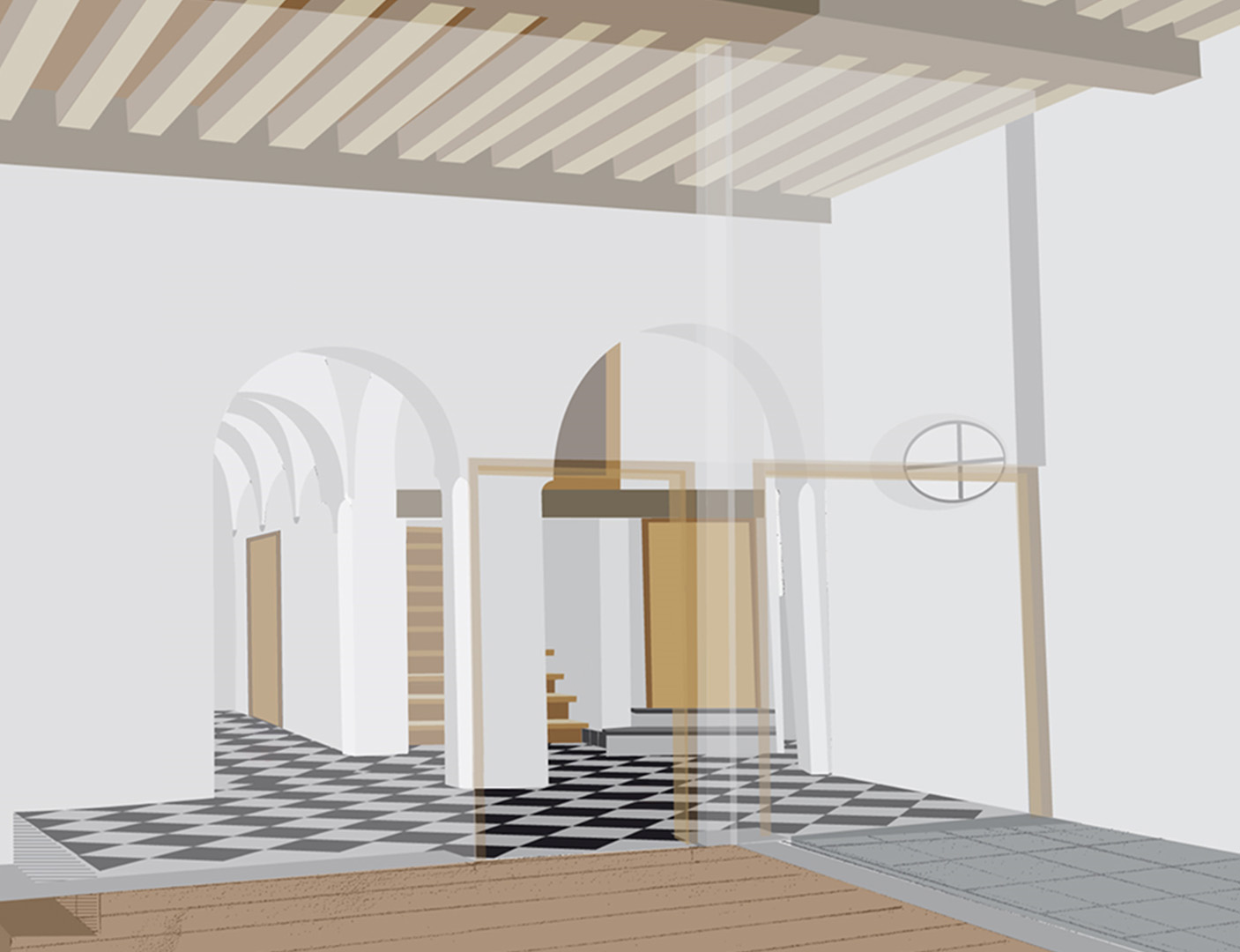
Witness to the Murder
The Murder Hall: this is where William the Silent was shot. It is one of the most important commemorative sites in Dutch history.
During the subsequent centuries, many prints of this dramatic event have been produced.
The prints, however, do not correspond with what actually happened. Next to these illustrations, then, you can read about the events as they are likely to have happened.
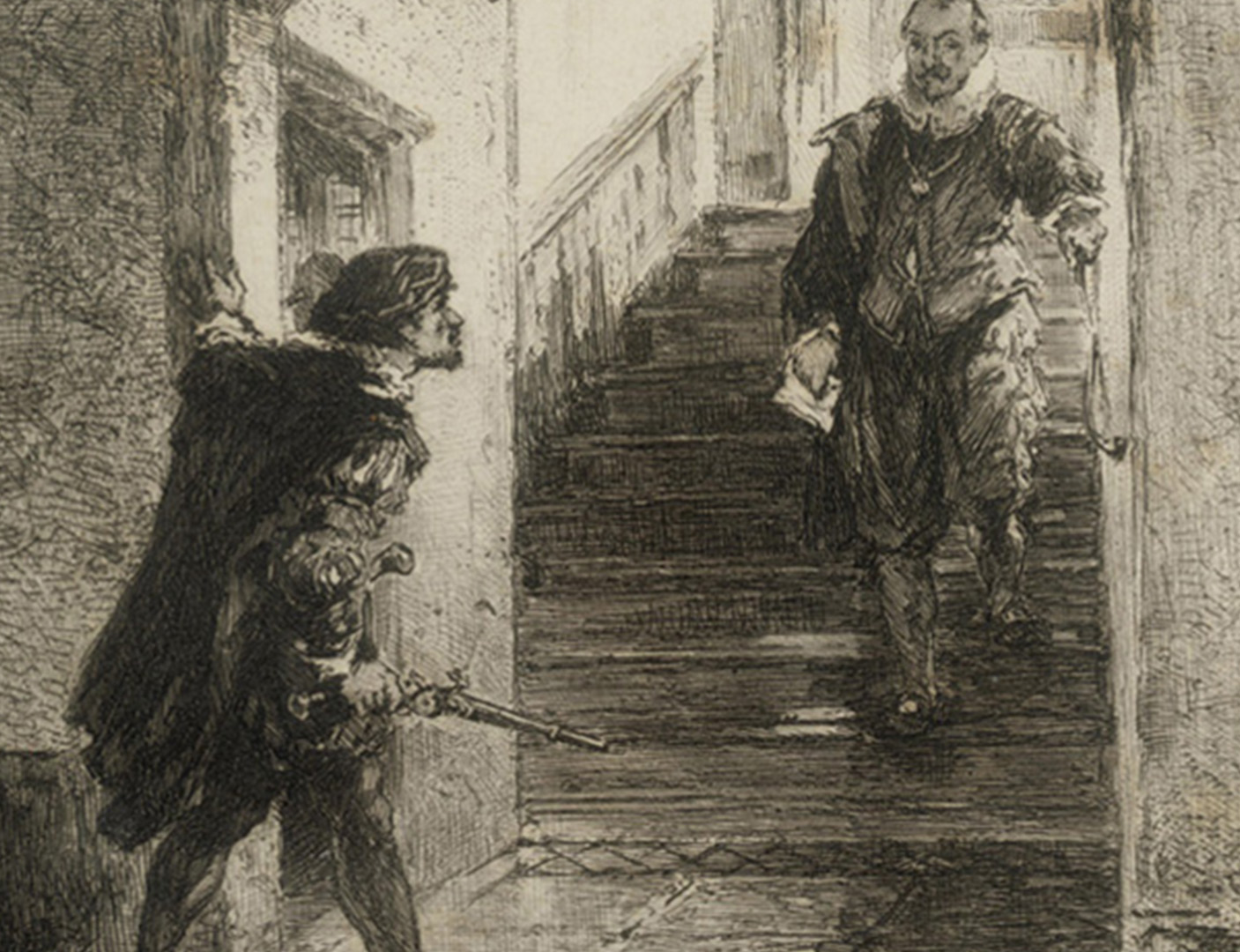
Position of the murderer
On 10 July 1584, Balthasar Gérard was waiting behind the pillar in front of the Historical Room (the room to the left).
When William the Silent had finished his luncheon, he left the dining room (the room to the right) with his family.
He was following his equerry, who was flanked by pages. Balthasar Gérard forced himself forward between two halberdiers and fired three bullets with a single shot.
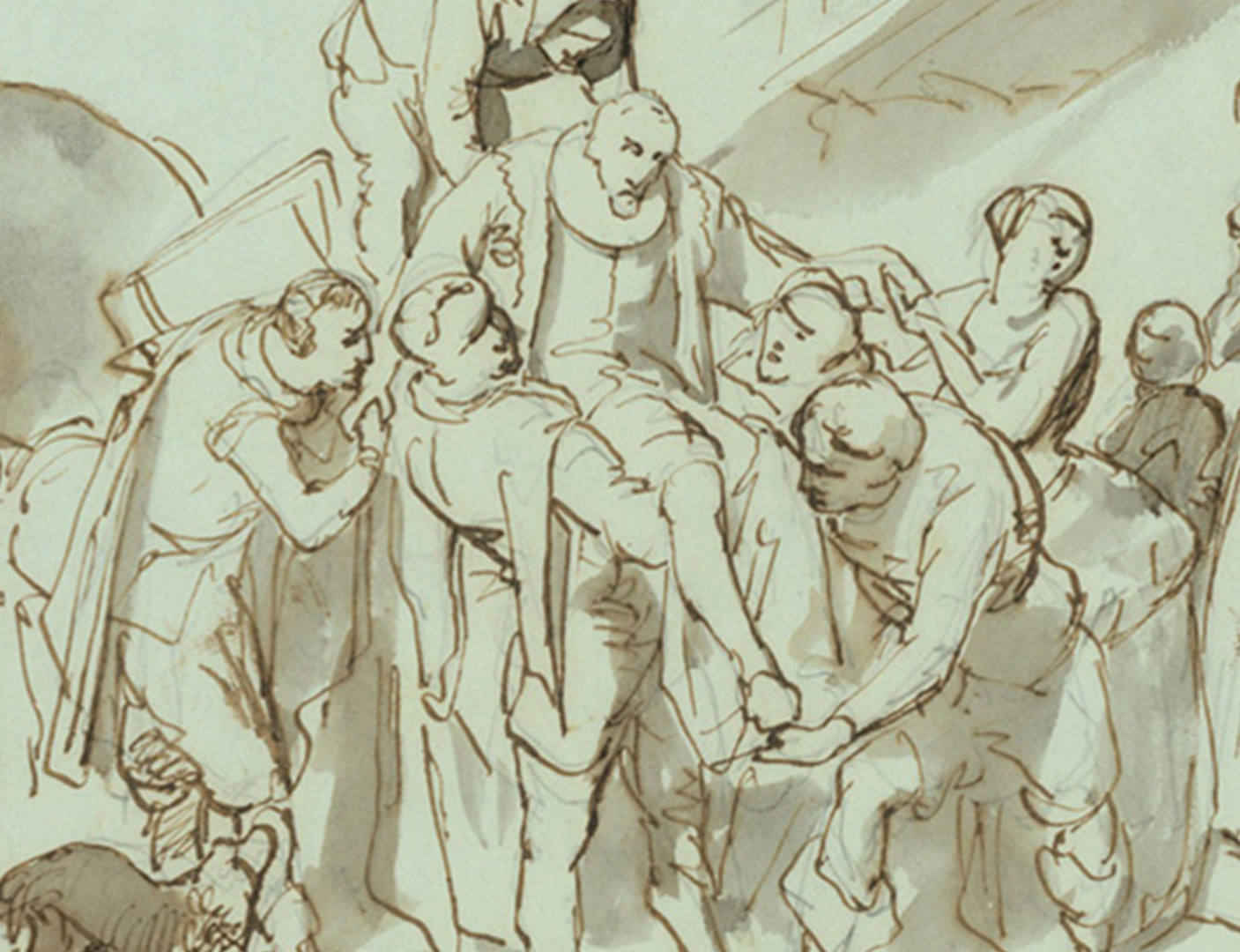
The murder and last words
The three bullets from Balthasar Gérard’s pistol landed in the left side of William the Silent’s chest.
According to the equerry’s testimony, William the Silent lived for a short time after the attack and spoke his famous last words: ‘My God, my God, have pity on me and this poor people.’ According to forensic research from 2008, the bullets went straight to the heart and William must have died instantaneously.
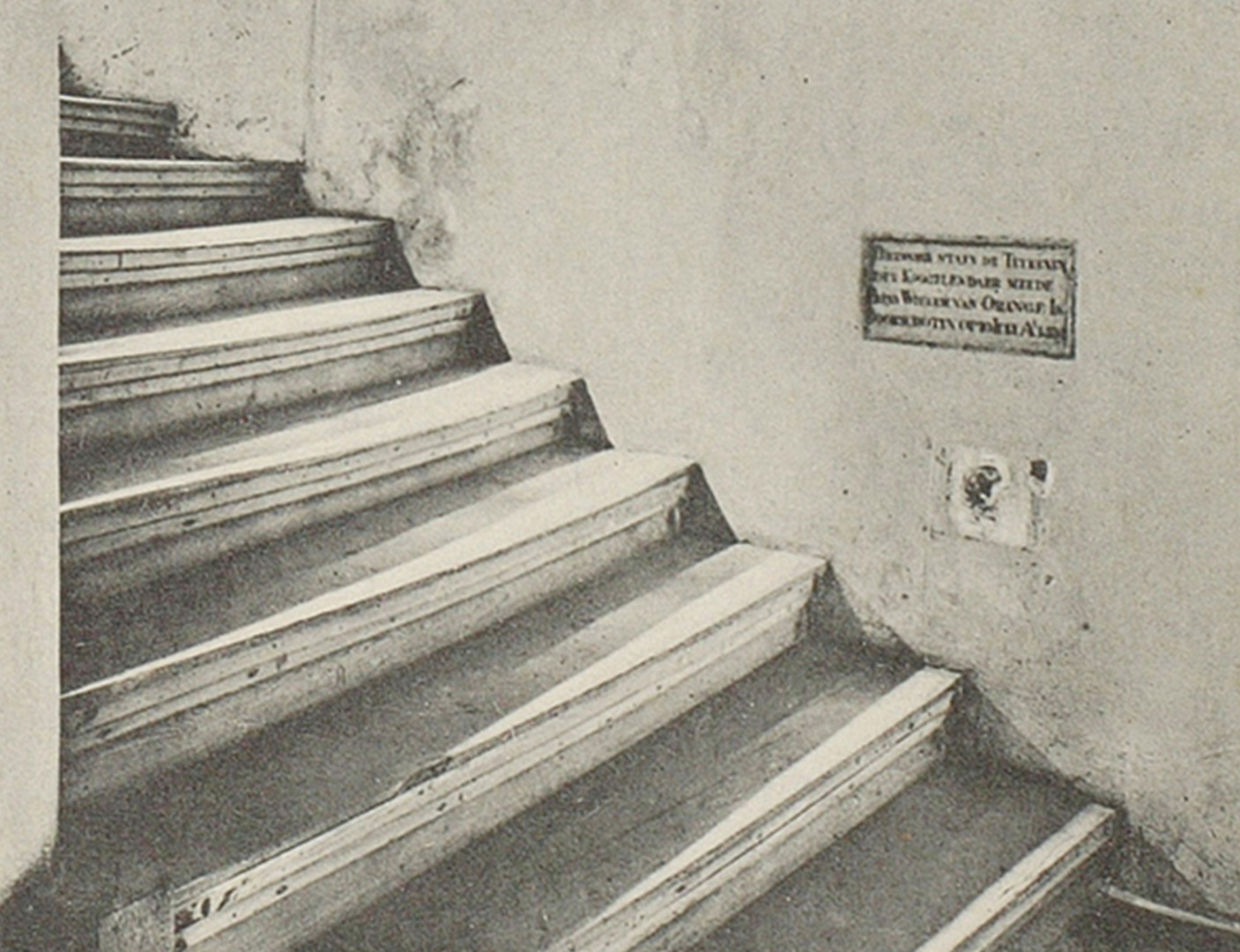
Bullet holes and commemorative plaque
The bullet holes are in a section of the wall that survives from 1584. Originally they were small indentations, not as large as they are now. They have grown in size because the Murder Hall has been an important tourist sight for centuries.
As early as the 17th century, the bullet holes were reported to have been shown to foreigners. They got to be this large because everyone wanted to touch them with their fingers. For that reason, a transparent plate now protects them. The commemorative plaque was probably added in the 18th or early 19th century.
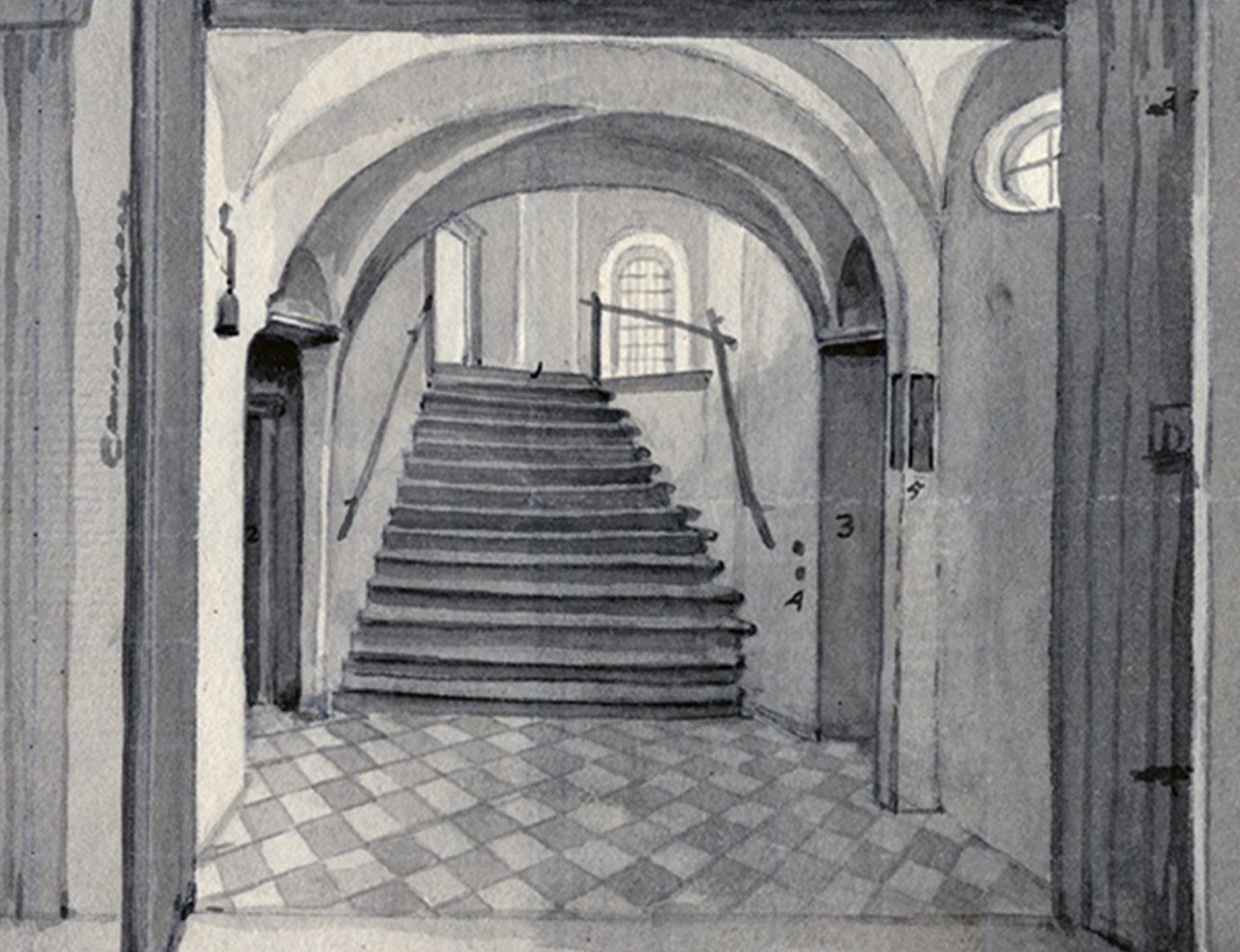
Stairs to the upper floor
In a 1584 report, a new staircase in Prinsenhof is mentioned, a ‘stately’ staircase for the court and for William the Silent. The monastery’s narrow spiral staircases were unsuitable.
This report likely concerned the staircase in the Murder Hall. The first reliable illustration of the stairs, ‘drawn true to life’, dates from 1752. Tests on the age of the wood revealed the present steps to date from 1847. This is, then, not the original staircase from the time of the murder.
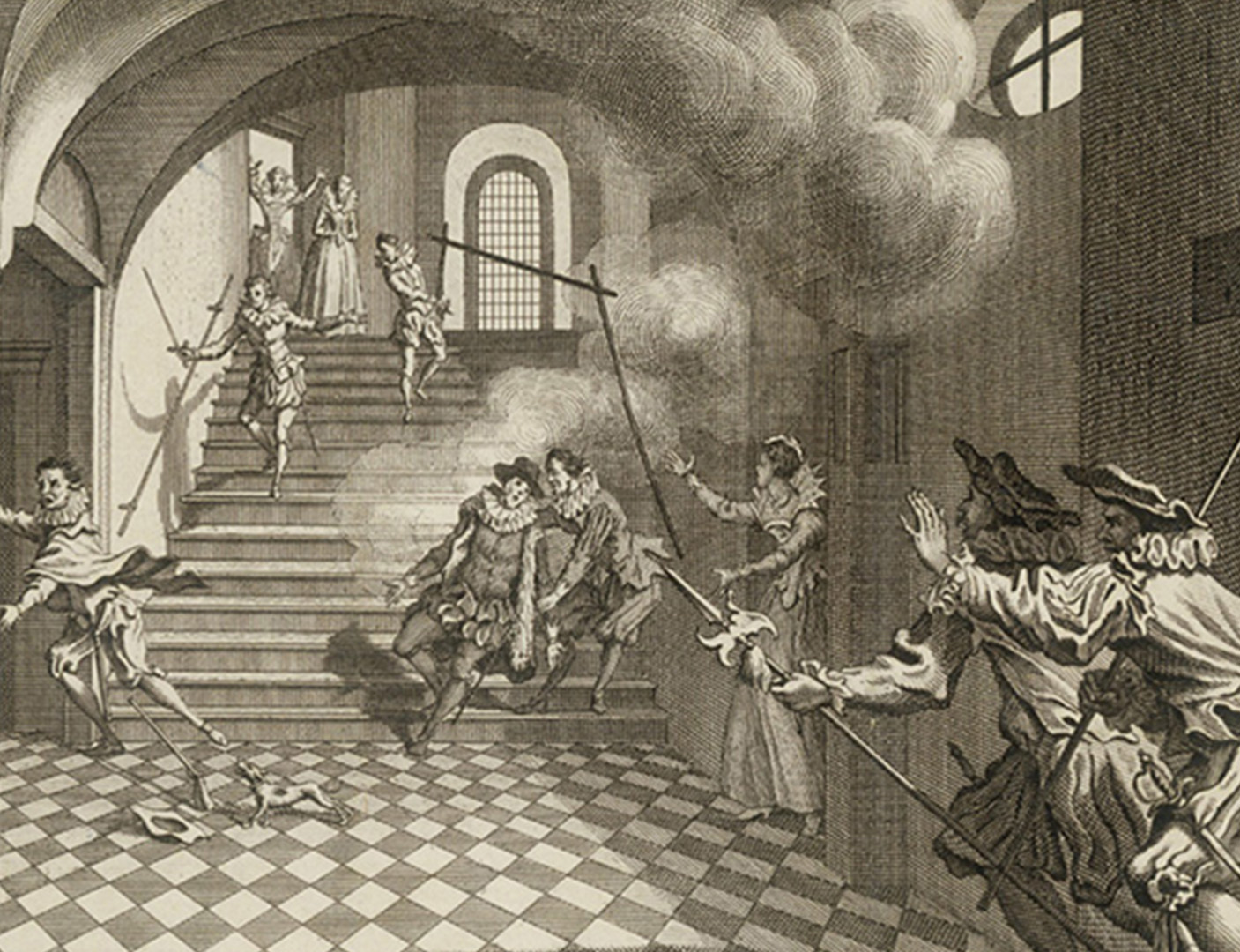
Tiled floor
The floor in the Murder Hall, with its black and white tiles in draughtboard pattern, is a reconstruction of what is believed to have been the old floor in 1584; it was laid during the restoration and furnishing of the building as a museum in 1884.
This floor does not correspond to the drawing of the floor from 1752, the earliest known illustration of the Murder Hall ‘drawn true to life’.
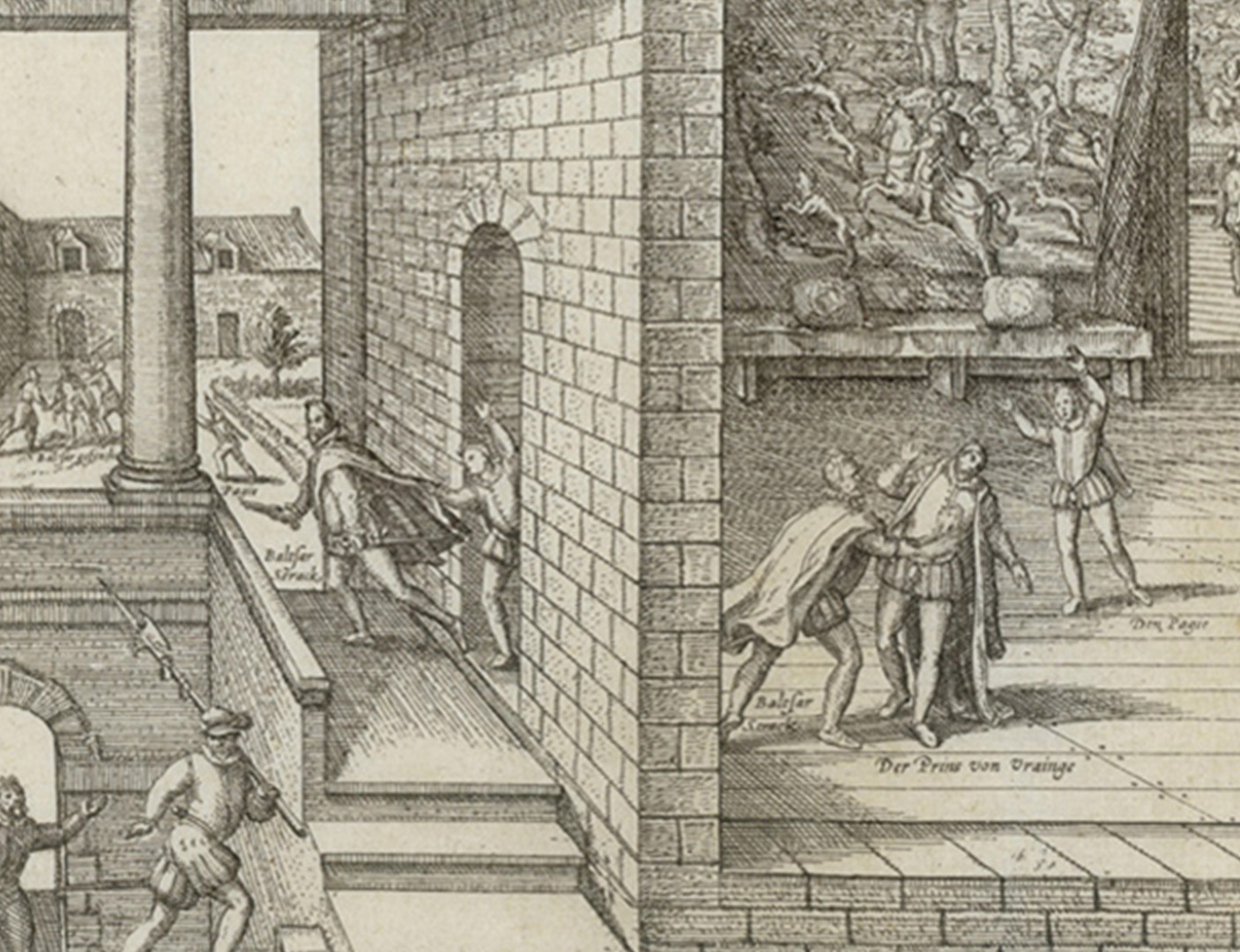
Door to the Prince’s dining hall
William the Silent was long thought to have come out of the Historical Room (the room to the left) before he was shot.
Research has revealed this not to be so. The dining room was on the right. On the day of murder, 10 July 1584, he entered the hall here after his meal. The exact layout of the passage and hall is unknown.
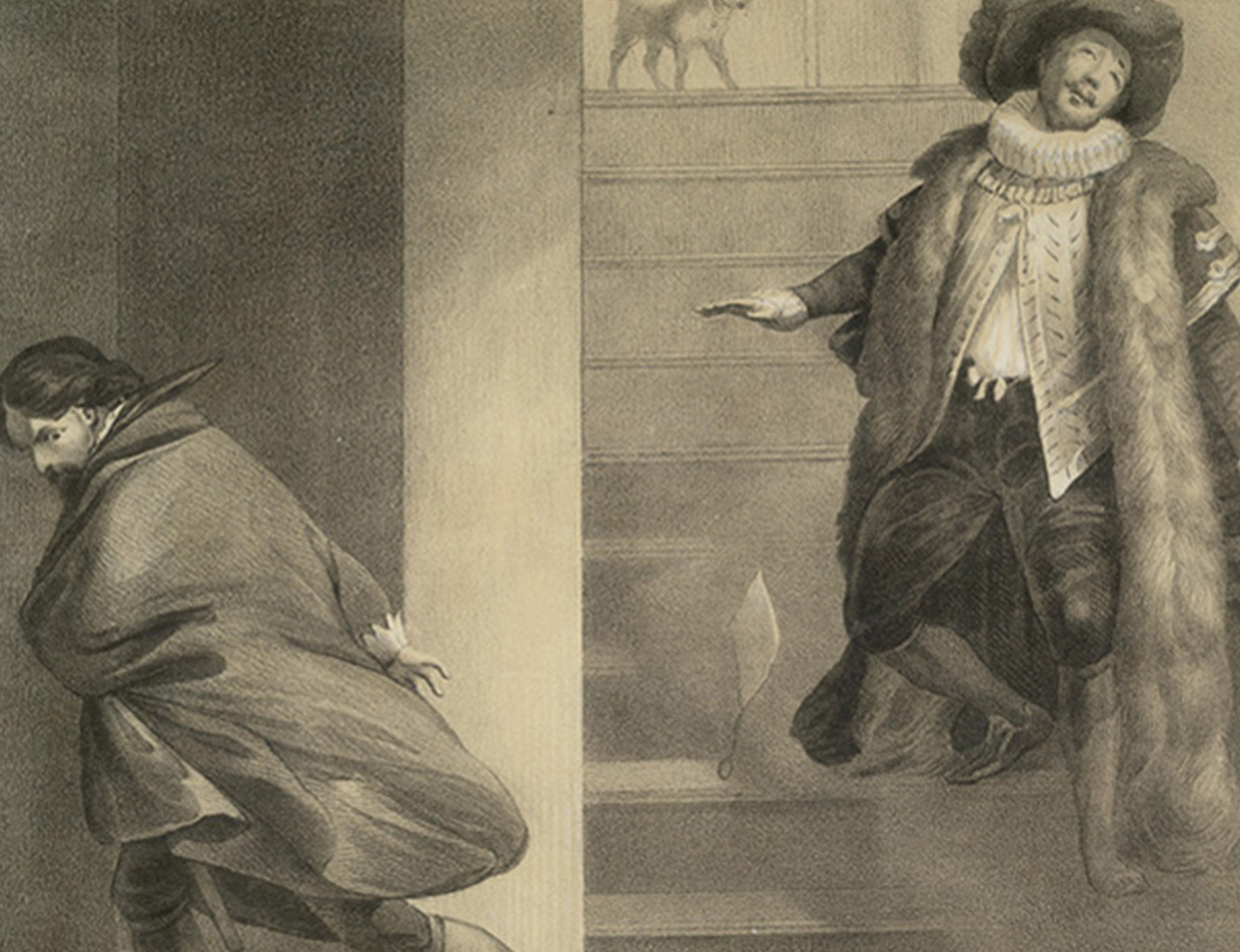
Passage to Schoolstraat
According to some descriptions, the murderer, Balthasar Gérard, fled through this passage in the direction of Schoolstraat.
Recent research has determined indisputably that Gérard tried to escape via a staircase (on the left) and the garden.

The weapon
Balthasar Gérard bought two wheellock pistols from a bodyguard. With one shot, he fired three bullets. He lost the second pistol as he fled from Prinsenhof.
The wheellock pistol is a handgun, invented around 1500. It can easily be used to commit murder because it can be carried while loaded. The wheel can be wound up in advance with a special key. When the trigger is pulled, the cock strikes the spinning wheel. This produces sparks igniting the gunpowder.
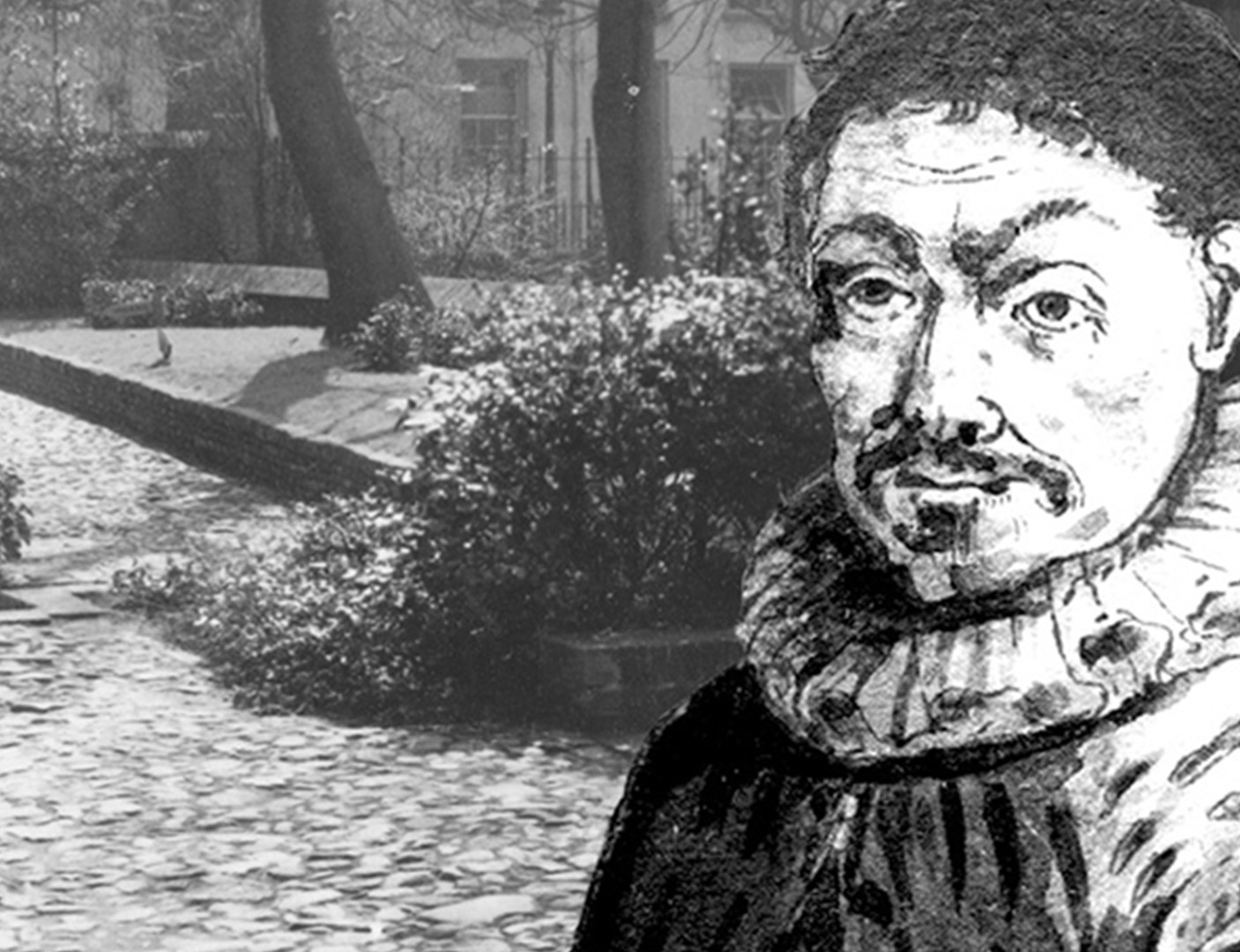
Murderer’s escape route
Balthasar Gérard had determined in advance whether the doors on his escape route were unlocked or open.
His plan consisted of escaping through the garden, the city rampart and the city canal. He hurried up these stairs and ran across the garden of Prinsenhof in the direction of the city rampart.
On his way, Balthasar suddenly bumped into a boy and also stumbled on a dung heap, but was able nevertheless to reach the city rampart. Hanging from the city wall, he was captured and brought to Prinsenhof for a first interrogation.